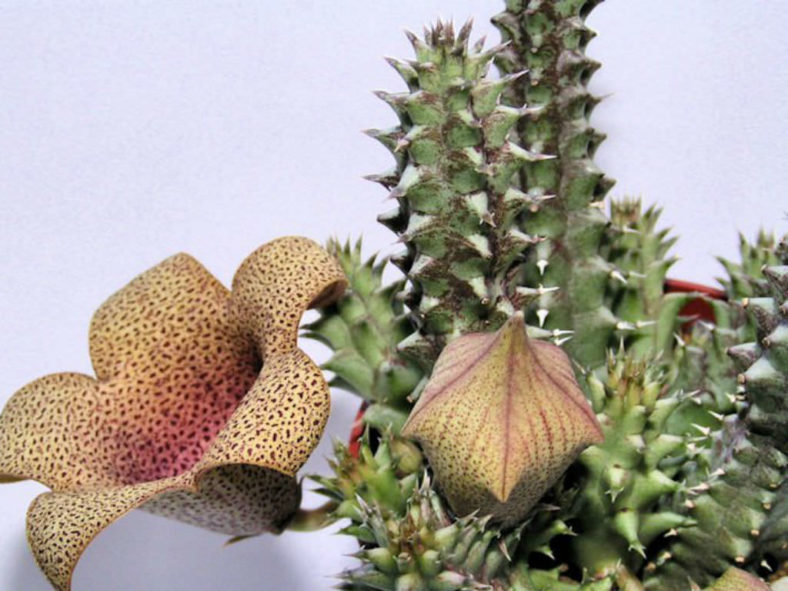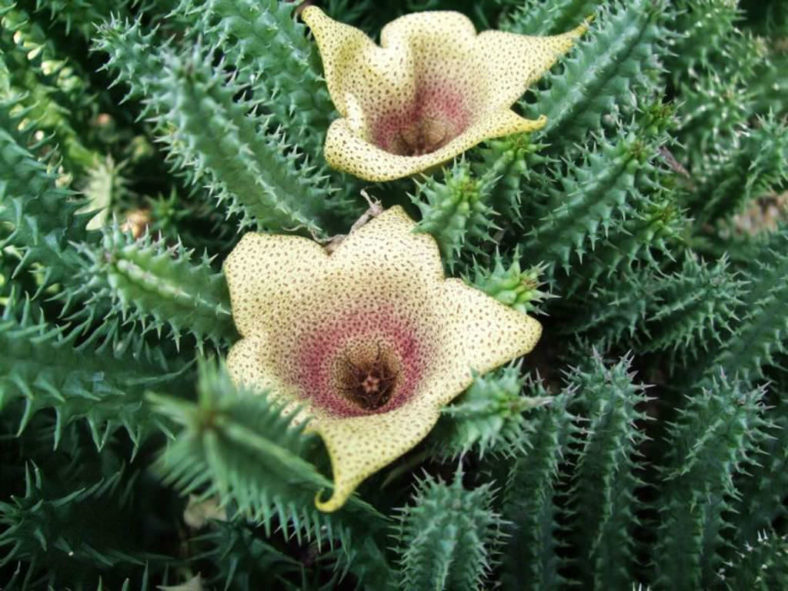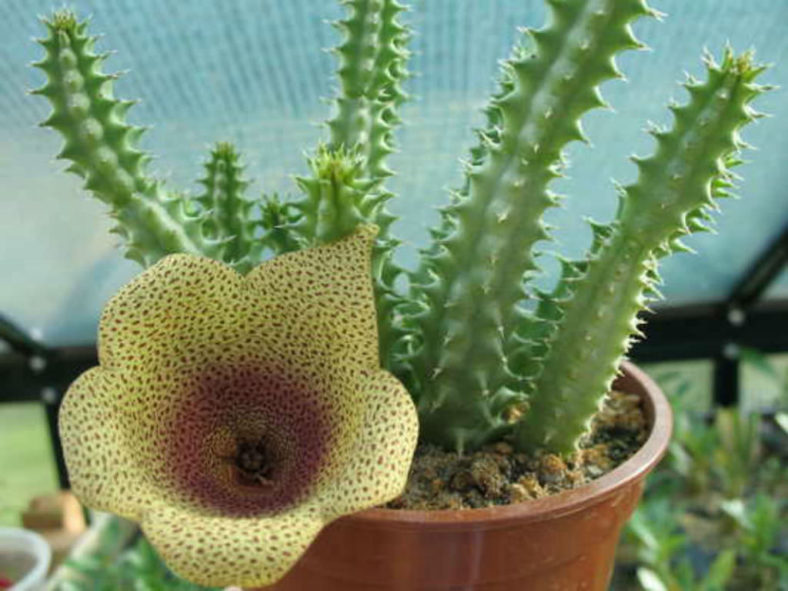Scientific Name
Tavaresia angolensis Welw.
Common Name(s)
Devil's Trumpet
Synonym(s)
Ceropegia tavaresii, Decabelone elegans, Decabelone sieberi, Stapelia digitaliflora, Tavaresia angolensis
Scientific Classification
Family: Apocynaceae
Subfamily: Asclepiadoideae
Tribe: Ceropegieae
Subtribe: Stapeliinae
Genus: Tavaresia
Etymology
The specific epithet "angolensis" (pronounced "an-go-LEN-sis") refers to Angola, where this species was first discovered.
Origin
Tavaresia angolensis is native to Angola and Namibia. It occurs on rocky outcrops and slopes, as well as in sandy soils on plains.
Description
Tavaresia angolensis is a small succulent that forms clusters of thick, fleshy stems, usually with 5 to 6, rarely 8 ribs lined with conical tubercles. The stems can grow up to 5 inches (12.5 cm) tall and 0.6 inches (1.5 cm) across. They vary in color from grey-green or blue-green to dark brown. Each tubercle has three whitish bristles at the tip.
The large, showy flowers are pale yellow with purplish-red spots and appear in mid-summer. They are trumpet-shaped with five lobes and can reach a length of 40 inches (10 cm) and a diameter of 1 inch (2.5 cm).

Hardiness
USDA hardiness zones 11a to 11b: from 40°F (4.4°C) to 50°F (10°C).
How to Grow and Care
Tavaresias are mainly grown by plant collectors, succulent enthusiasts, and those who enjoy cultivating unorthodox-looking plants. They come from summer rainfall areas, are intolerant of excess water, humidity, and low winter temperatures, and are easily destroyed by molds. Flower buds drop off easily due to the slightest touch or unfavorable conditions. Tavaresias prefer light shade rather than full sun, although stems may not color up under shady conditions. They grow well in light, gritty soil with very liberal drainage.
Plants are usually increased by cuttings, which, as they are very succulent, should be allowed to dry for a week after being taken off, when they may once be put singly into pots. Grafting the Tavaresia on Stapelias is often useful and can be recommended.
See more at How to Grow and Care for Tavaresia.
Links
- Back to genus Tavaresia
- Succupedia: Browse succulents by Scientific Name, Common Name, Genus, Family, USDA Hardiness Zone, Origin, or cacti by Genus
Photo Gallery
Click on a photo to see a larger version.

